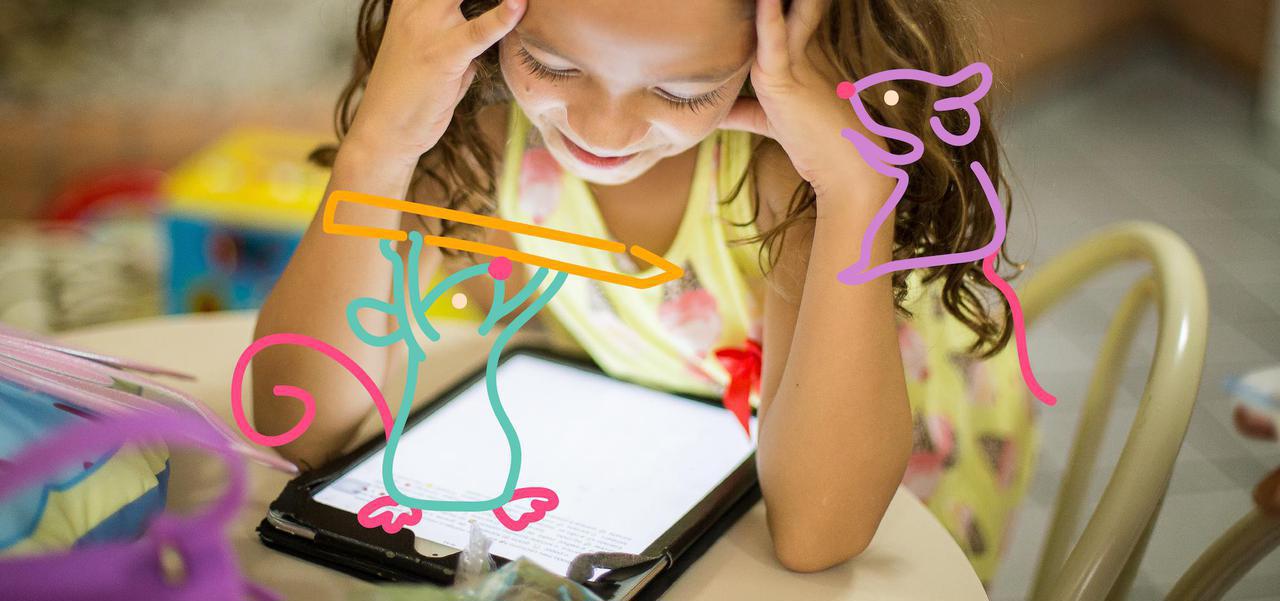
Child care centres today are really embracing technology as a way to enhance children’s learning. There are so many amazing apps, programs and devices that can help to bring ideas to life.
Anyone who has seen a child handle an iPad like an absolute pro would understand that little ones can learn how to use new technology very quickly.
Here are just five of the popular forms of technology innovation in childcare that you might find in child care centres in Australia.
1. Interactive Screens and SMART Boards
Children can learn how to form letters and numbers by using interactive screens and SMART Boards. These allow them to ‘write’ on the screen which helps their fine motor skills development and develop an understanding of language. The screens can be used for fun maths games, matching games, or to help children recognise words as they begin to read.
Educators find these interactive whiteboards so useful to engage the children and hold their attention while they teach. Children can watch the dynamic images on the screen, as well as enjoy the touch-screen element.
This type of technology appeals to children who are visual learners, as well as those who need a hands-on approach in order to learn.
The boards are also connected to the internet, meaning the educators can extend the children’s interests and find out more about a topic, or quickly find a video or song that would help their lesson.
They’re also helpful for children as they can use their hands and fingers in a much more natural way, compared to trying to use a mouse or trackpad on a computer, which little ones often find quite challenging.
2. Interactive hands-on play
There is a new technology used in some centres called iSandbox, which is a large table filled with sand. Augmented reality technology means that when the children form the sand into a pile, the sensors pick this up and project an image of a mountain or volcano onto it.
When the children move the sand, it can project images of water moving along a sand ‘river’ or even show lava moving across the ground. There are many different modes for the software, including ice age, ocean and animals, volcano, waterfall, the four seasons, colours and shapes, and even a Jurassic era mode.
3. Hand-held devices
Children are very tactile, and they’re fast learners too. Hand a child any digital device and it won’t be long before they figure out exactly how to use it (and teach us adults a thing or two).
Centres will sometimes use technology tools such as a digital camera to extend a child who is interested in a project. For instance, they might be spending some time researching bugs, so they could use the camera in the playground or veggie garden to take some photos of bugs to use in their project.
A centre might use an iPad for some small group work or to play educational games. For example it could be a matching game, a maths game, or a literacy game that two children could work on together under the watchful eye of an educator.
4. Safety and communication
Safety is the number one priority for child care centres, and they make the most of technology to help them keep the little ones safe.
Some safety features include digital fingerprint technology to enter the centre, computers and apps to sign your child in and out for the day, or the wonderful parent apps (such as StoryPark, Xplor Home and Kinderloop) that allow centres to communicate directly with parents.
5. ELLA language program
ELLA stands for Early Learning Languages Australia. It is an Australian Government initiative to inspire pre-school age children to learn a new language and explore different cultures.
The program itself is digital and (because it’s designed for children) completely play-based. It’s completely free for centres to use, and comes with a choice of 13 languages including Mandarin, French, German, Indonesian, Italian, Japanese and Vietnamese (with more to be added this year).
Already, more than 2,500 preschools are using ELLA. The best part is that it doesn’t matter where they are based, as it’s all digital. Read more about ELLA here.
Educators and child care centre managers understand that the future is digital. Technology in childcare is helping children to embrace technology from a young age.